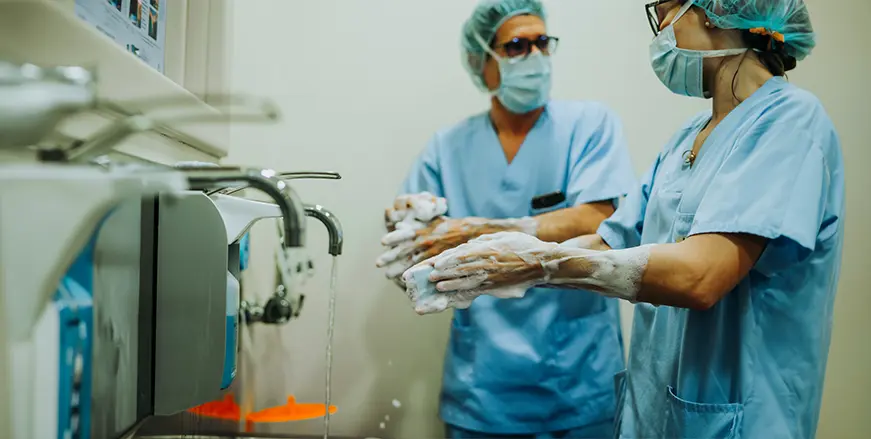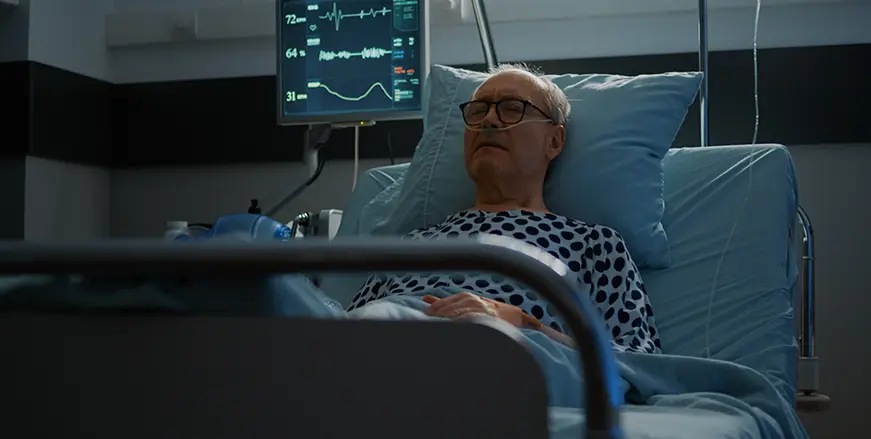Doctor certified article
CABG Abroad: A Detailed Manual for Medical Tourists

Introduction
Coronary Artery Bypass Graft (CABG) is a highly effective yet complex surgical intervention designed to restore optimal blood flow to the heart muscle. This guide is intended to serve as a comprehensive resource for medical tourists considering undergoing CABG in a foreign country.
Why is CABG Necessary?
The Progression of Coronary Artery Disease
Coronary artery disease (CAD) often leads to narrowing and blockage of the arteries, which can significantly affect the blood supply to the heart muscle. While medication and lifestyle changes may manage early stages of CAD, advanced cases may require surgical intervention.
The CABG Solution
CABG offers a robust solution by creating a new route for blood to flow around the blocked artery, restoring normal circulation to the heart muscle. That's why it is often called a "bypass surgery" for short.

What Are the Treatment Options?
Is CABG the Only Solution?
No, being a complicated open surgical intervention, CABG is often recommended when other treatment options such as medication, lifestyle changes, or less invasive procedures like angioplasty have proven insufficient. It's crucial to discuss with your healthcare provider to decide the best course of action.
Making an Informed Choice
Your cardiologist will typically consider factors like the location and extent of the blockage, your overall health condition, and previous treatments before recommending CABG.
Risks and Complications
Immediate Risks
The surgery carries immediate risks such as bleeding, infection, and adverse reactions to anesthesia. There is also a low risk of stroke or heart attack during the procedure.
Long-Term Consequences
While CABG generally offers excellent long-term outcomes, risks include the graft becoming blocked over time, requiring a repeat procedure or alternative treatment methods.

Pre-Surgery Preparations
Medical Tests
Expect a series of tests including blood tests, ECGs, chest X-rays, echocardiograms, and coronary angiograms to assess your fitness for surgery.
Preparing for Surgery
At least a week before the surgery, you may be required to stop taking medications that affect blood clotting. Dietary and activity limitations may also be imposed.
Day of the Surgery
What Happens in the Operating Room?
Upon arrival at the hospital, you'll be prepped for surgery, which includes administering anesthesia. After an open surgical field is created, the team will proceed with the bypass, using either a section of a healthy blood vessel from another part of your body or a synthetic graft to reroute blood flow around the blocked artery.
Anesthesia and Safety Protocols
General anesthesia is typically used for CABG surgeries. The anesthesiologist monitors vital signs and ensures you're comfortable throughout the procedure.

Recovery and Post-Operative Care
Hospital Stay and Immediate Care
Most patients remain in the hospital for about 5-7 days post-surgery for monitoring. Pain management and prevention of infection are the primary focus during this period.
The Journey Back Home
For medical tourists, returning to their home country requires logistical planning, including ensuring proper medical care during the flight and upon arrival.
Activity Limitations and Lifestyle Changes
The First Weeks
Patients should avoid strenuous activity in the first few weeks post-surgery. Light walking is encouraged as part of the recovery process.
Long-Term Considerations
Lifestyle modifications, such as a heart-healthy diet and regular exercise, are crucial for the longevity of the graft and overall cardiac health.

Follow-Up and Monitoring
Virtual Check-Ups
Telemedicine plays a vital role in the follow-up care for medical tourists. Virtual consultations can be effective for reviewing test results and making medication adjustments.
In-Person Visits
While virtual check-ups are convenient, some situations may require in-person visits to a local healthcare provider for diagnostic tests.
Second Opinions and Alternative Treatments
Benefits of Second Opinions
A second opinion can provide added confidence in your treatment plan, especially when contemplating a complex procedure like CABG.
When to Consider Alternative Treatments
Your healthcare provider may discuss alternatives to CABG depending on the specifics of your case, including the use of medications or other less invasive procedures.
Conclusion
Coronary Artery Bypass Grafting is a lifesaving but complex procedure. For medical tourists, the considerations extend beyond just the medical aspects. It involves careful planning, from selecting the right healthcare providers to arranging post-operative care back home. This concludes the second segment of our in-depth guide. Please note that while this article aims to offer comprehensive information, it should not replace professional medical advice.
References
Harskamp, R. E., & Lopes, R. D. (2013). Coronary artery bypass graft surgery and percutaneous coronary interventions in patients with unprotected left main coronary artery disease. JAMA Internal Medicine, 173(10), 885-892. Link Hillis, L. D., Smith, P. K., Anderson, J. L., Bittl, J. A., Bridges, C. R., Byrne, J. G., ... & Tommaso, C. L. (2011). 2011 ACCF/AHA guideline for coronary artery bypass graft surgery. Journal of the American College of Cardiology, 58(24), e123-e210. Link Windecker, S., Stortecky, S., Stefanini, G. G., daCosta, B. R., Rutjes, A. W., Di Nisio, M., ... & Jüni, P. (2014). Revascularisation versus medical treatment in patients with stable coronary artery disease: network meta-analysis. The BMJ, 348, g3859. Link Virtual Consultations in Health Care: Practical Applications. (2020). Telemedicine and e-Health. Link Weisel, R. D. (2015). Coronary artery bypass grafting then and now: A 50-year odyssey. The Journal of Thoracic and Cardiovascular Surgery, 150(4), 791-798. Link
These references offer a deep dive into various aspects of Coronary Artery Bypass Graft (CABG), from procedural guidelines to the role of telemedicine in post-operative care for medical tourists. Always consult with healthcare professionals for a comprehensive understanding of your condition and treatment options.

